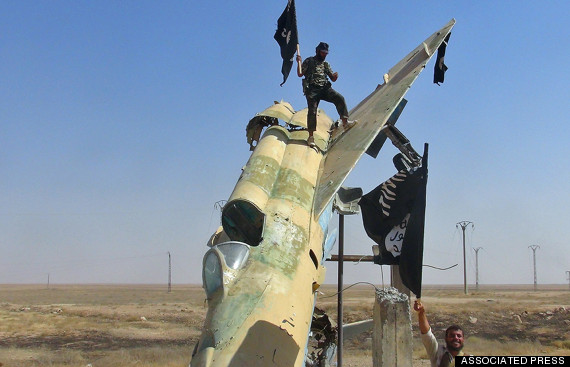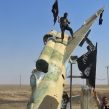
Russia Does Not Know How to Fight Islamic State Loyalists
Publication: Eurasia Daily Monitor Volume: 12 Issue: 143
By:

Russia continues to surprise observers by its actions to counter the threat of the Islamic State (IS). Notably, Russian authorities recently updated the list of Islamic organizations that could harm the Russian Federation. The list is interesting because it includes organizations that disappeared more than ten years ago. For example, it is unclear why the High Military Council of the Joint Forces of Mujahideen of the Caucasus is still on the list even though it disappeared back in 2007, when the Caucasus Emirate was proclaimed. Another organization, the Congress of the Peoples of Ichkeria and Dagestan, ceased to exist after the start of the second Russian-Chechen war, in the fall of 1999 (Ntv.ru, February 27), but it is still on the list. One has the impression that the Russian authorities do not know that these organizations disappeared a long time ago. It is understandable why the Caucasus Emirate, which is still around, has made the list. It also makes sense to include the terrorist organization Islamic State on the list of Islamic extremist organizations, even with a lag of two years. Still the logic behind the inclusion of some of the other existing groups is not entirely clear. For example, it is hard to understand why the Syrian organization Jabhat al-Nusra, which is not believed to harbor any plans against Russia, was put on the list.
Despite its shortcomings, the updated list of organizations that pose a threat indicates Russian priorities at the moment. The steps taken by Russian authorities to prevent the ideas of IS supporters from spreading in the country are quite similar to Russian policies taken toward Hizb ut-Tahrir (Party of Liberation) over the past twenty years (Kavkazsky Uzel, July 30, 2014).
In the worst traditions of the Soviet past, “peaceful” citizens wrote an appeal to Russian President Vladimir Putin, Dagestan’s Governor Ramazan Abdulatipov and Dagestan’s Interior Minister Abdurashid Magomedov, to close down the mosque in the Aeroport area of the southern Dagestani city of Derbent, on the border with Azerbaijan. The authors of the appeal claimed the mosque was a Salafist establishment that spread the ideas of the Islamic State (Kavkazsky Uzel, July 23).
The appeal’s signatories, seven women, were naturally anonymous, so that even the Dagestani interior ministry could not find out who they are and whether they even exist. Gajirasul, the imam of the mosque, which is indeed a Salafist mosque, denied that the outflow of young people to join IS was related to attending his place of worship. According to Gajirasul, surveillance cameras are installed inside the building; and even though arrests have been quite frequent in the mosque, no accusations have ever been introduced against it. Up to 1,500 people from Derbent attend the mosque, which attracts the authorities’ attention. The authorities equate Salafism with IS, which is obviously not the case.
On July 25, continuing its traditions in combatting Islamic radicalism, the Russian police, jointly with the Federal Security Service (FSB), made arrests at a mosque in Balashikha, near Moscow (Newsru.com, July 24). More than 30 individuals were arrested on suspicion of disseminating extremist material and recruiting for the Islamic State. The detained individuals were of various nationalities—Russians, Tajiks, Chechens, Uzbeks and others. Following the search of the mosque, which lasted about four hours, everyone inside was taken to the police station. One officer in the police cordon said the detained individuals may have been involved with IS, but all those arrested were later released. However, the Russian neighbors of the mosque are unlikely to forget the police operation and will regard the Muslims who worship there as potential terrorists.
A statement made by the Russian security services about killing IS militants in Nalchik, the capital of Kabardino-Balkaria, which was circulated by the mainstream Russian media, is also dubious. On July 23, the security services killed six people in an apartment block in Nalchik. The connection between the slain rebels and IS was made on the basis of “a 1.5-kilogram homemade bomb, which was used by IS militants in Syria” (Interfax, July 24).
The authorities seem to be saying that the members of the former Caucasus Emirate, and now of the Islamic State’s North Caucasus branch, did not know how to make bombs until IS taught them! It was clear from the onset of the special operation in Nalchik that it was designed to kill those who may have been involved in the July 14 murder of Marat Tokov, an official with the republican prosecutor general’s office. Tokov served in the department for combating extremism (Kommersant, July 24).
The police must have been ordered to draw a link between the six slain individuals and IS. From now on, every slain suspected rebel will be presented as someone with ties to one of the most radical Islamic organizations in the world in order to show the Russian government is successfully battling IS. However, if the Russian security services have their way, all Muslims who do not submit to the official muftis and imams will automatically be considered suspicious characters. That is why the Salafists want to set up their own mosques and elect their own imams, rather than have an imam appointed by the authorities. If every Salafist who rejects the official Russian Muslim clergy is regarded as a suspect, the number of suspect Muslims across Russia could grow from the thousands into the hundreds of thousands.




